The Latest from TechCrunch |  |
- Revealed: @Astro_Mike Was Not Updating Twitter From Space, Nor Was He Doing It In Real-Time. Heck, It Wasn’t Even Him!
- Goodbye, OQO
- Ron Conway: IPO Market At Least A Year Away From Opening Up
- UK Court Rules In Favor Of eBay In L’Oreal Fight, Counterfeiters Rejoice
- Streamy Gets More Social, Instantly Becomes My New Start Page
- Infinity Ventures Summit In Sapporo: 12 Japanese Startups Set Out Their Pitches (Part 1: The Five Winners)
- Let’s Stop Picking On Those iPhone App Reviewers. Actually, Let’s Not.
- Easily Create Your Own Feed Bundles Of Joy With Google Reader
- Auctionomics Looks To Bring New Layers Of Flexibility And Control To Online Auctions
- It’s Psychic! Inbox Preview Lets You Check Your Gmail Before It’s Done Loading
- TwitVid Wants To Be The TwitPic Of Video Sharing On Twitter
- Evernote Stats: One Million Registered Users, 360,000 Active, 13,755 Paid
- Plastic Jungle Scores $4.8 million For Gift Card Marketplace
- The Next iPhone: Warp Speed, Mr. Sulu
- Source: Google Values MySpace Deal At $75 Million/Year Or Less
- Google’s Products Get A New Logo
- DocStoc Launches Document Collections
- Another Vote Of Confidence For Post-Print Media: Business Insider Raises New Funding
- Google Friend Connect Finds A Friend In Netlog
- What We Know About The Apple Tablet So Far
- Google Revises And Revs Chrome’s JavaScript Engine
- What’s In The Gmail Magic Inbox?
- OpenTable Has A Healthy IPO. Shares Shoot Up 40 59 Percent, Market Cap Passes $600 Million.
- Areps.at: This Week’s Facebook Phishing Scam
| Posted: 22 May 2009 08:09 AM PDT
It was actually a NASA employee doing the micro-updating for him, and not even in real-time: Massimino writes his updates in space and then e-mails them to Houston. That means it often takes hours for updates to appear on the Twitter account, since e-mails are transmitted from the shuttle only a few times a day. Not to blow my own horn here, but I figured everyone kinda knew it wasn’t actually Massimino tweeting from space. Isn’t it obvious that astronauts probably have better things to do than browsing the Twitter website every so often to fill in fans on what they’re doing? Granted, you could argue the same about everyone else on Twitter, but it’s still kinda of naive to think that astronauts have always-on Internet connectivity in orbit. Either way, Etan Horowitz from the Orlando Sentinel burst at least 340K people’s bubbles today. Update: Massimino actually revealed this himself some time ago. Guess that particular micro-message got lost in the real-time stream somewhere. (Via The Next Web) Crunch Network: MobileCrunch Mobile Gadgets and Applications, Delivered Daily. |
| Posted: 22 May 2009 07:43 AM PDT "We are sad to report that due to financial constraints, OQO is not able to offer repair and service support at this time. We are deeply sorry that despite our best intentions, we are unable to provide continued support for our faithful customers. Please accept our sincerest apologies"OQO was one of the original Mobile Internet Devices (MIDs), a precursor to today's netbook. Sadly, they could never get the price below $1000 even though these little beasties could run XP like a champ. The company was planning to release the OQO 2+, an updated version of the MID, this year. Click through for a beautiful memorial video. |
| Ron Conway: IPO Market At Least A Year Away From Opening Up Posted: 22 May 2009 07:39 AM PDT
Questioned on when he sees the IPO market open up again, Conway responds that he thinks we are at least one year away. He’s more bullish on the M&A market picking up again, expressing the hope that this is only six months away. In the rest of the interview, Conway mostly talks up some of the 130 startups he’s invested in to date, although interestingly he reveals that he’s not on Facebook or Twitter because he doesn’t have the time for any of these services. Since he’s an early-stage investor in both those companies, that would make Conway the anti-Peter Lynch. He also claims two of his portfolio companies, Admob and Digg, could one day go public. Crunch Network: MobileCrunch Mobile Gadgets and Applications, Delivered Daily. |
| UK Court Rules In Favor Of eBay In L’Oreal Fight, Counterfeiters Rejoice Posted: 22 May 2009 05:43 AM PDT
This is fantastic news for counterfeiters, who can now keep on duping customers into buying fake L’Oreal cosmetics through the popular web service. Crunch Network: CrunchBase the free database of technology companies, people, and investors |
| Streamy Gets More Social, Instantly Becomes My New Start Page Posted: 22 May 2009 02:53 AM PDT
I’ve been looking for this type of service for a long time, so I signed up for Streamy right after the review, yet quickly forgot about it and went back to using good ol’ Netvibes for my feed reading needs and other (desktop) applications for keeping track of my social graph across a variety of services. That’s all history now. I decided to take Streamy for another spin now that they have just integrated more social features to the mix, like the ability to view real-time streams from Facebook, Twitter and FriendFeed inside the web-based interface as well as chat widgets that connect to your AIM, Google Talk, Yahoo Messenger and Windows Live Messenger accounts. Sure, there are a number of services still missing to make Streamy the ultimate social dashboard, but as far as I’m concerned this is all I need (as long as I keep Skype running too). Streamy is really fast, which is a big part of why I like it so much. Skimming RSS feeds is a joy to do, the recommended stories were spot on, and the ability to create groups and folders is a big plus. To share stories with your friends or save them for later you can simply drag the headline of an article to the side a bit, which will pop up a menu that lets you perform a couple of actions in a very intuitive way. You can also share stories with your friends over IM by simply dragging the headline to your contacts in the sidebar. My one gripe, and it’s a huge one: the RSS feeds I subscribed to for testing (e.g. TechCrunch, see screenshot) were not all up-to-date, with the latest item sometimes dating back a full day ago. If you’re a news junkie like I am, that’s unacceptable, so I hope that issue gets resolved soon. (Update: Twitter also doesn’t update quickly enough, not even after refreshing). Streamy just became my new start page, and if they can fix the RSS feed delivery delay it’ll be that one I’ve been looking for so long, too.
Crunch Network: CrunchBoard because it’s time for you to find a new Job2.0 |
| Posted: 22 May 2009 01:49 AM PDT
The program also includes a launch pad, which just took place and gave a total of 12 Japanese start-ups the chance to present their wares onstage to a panel of judges and a crowd of about 300 people. But the word “Launch Pad” is a slight misnomer as IVS serves as a venue also for established start-ups to get their products in front of as many influential bloggers, VCs and entrepreneurs as possible. So unlike TechCrunch50, for example, the IVS concept doesn’t require companies to actually start businesses here. In the end, a service called MotionPortrait won the title of best startup of the IVS Launch Pad. You can read my thumbnail sketch of each of the five award-winning contenders below, along with my personal impressions. Please note some of the companies have yet to launch homepages in English.
MotionPortrait isn’t limited to human faces, as you can manipulate pictures of animals and objects in the same way (think dancing Easter Island statues or laughing leopards). This may sound slightly goofy, but the technology is really impressive. MotionPortrait operates in a crowded market, but the technology is in my view more powerful than the one Israel-based Gizmoz offers, for example. Very cool stuff that can be used in games, virtual worlds, advertising campaigns or social networks. Watch the video below for a demo.
Deqwas A recommendation engine called Deqwas came in second. Developed by Tokyo-based Scigineer, the engine is currently being used by over 30 e-commerce sites, blogs and social networking sites in the fixed and mobile web. The company also managed to license out its technology to US-based services, i.e. to this online bridal store. Deqwas is financially backed by cross-country (US and Japan) incubator Innovation Kitchen, a Mitsubishi subsidiary.
Vizoo I really liked the concept behind second-ranked Vizoo (there wasn’t a third prize this time), a YouTube for graphs. Developed by Tokyo- and Chicago-based Fillmore Advisory, the service will be available in English “in the near future”, as Vizoo representative Kosuke Mori told me.
Asked what the main difference between his service and American counterparts icharts or Swivel is, Mori said Vizoo offers users rich data bases they can immediately start working with. Graphs can be created using Vizoo or won data, tagged and commented on. The graphs can later be shared not only on Vizoo itself but also integrated into other sites and widgetized. Very useful for business analysts, journalists, scientists etc., but I see difficulties in monetizing the site. Still Mori is optimistic, saying by launching Vizoo, he wants to “destroy” established players like Bloomberg or Reuters.
Cerevo A new photo management service called Cerevo came in fourth at the show. The company intends to provide a double-sided solution for people wanting to send and share pictures online by not only developing a new photo management site but also manufacturing a digital camera completely from scratch.
The camera will automatically send pictures users took to Cerevo’s “online photo album” via Wifi. At the same time, users are notified through a message going to their inbox. You can then send pictures stored on Cerevo servers to friends or to various social networks using email. The big idea here is that the camera is only needed to take the pictures. Users don’t need direct access to the device or files in order to share pictures with others. Cerevo claims the concept is unique on a worldwide level. CEO Takuma Iwasa said his company (that he established after leaving Panasonic - a rare move in big company-crazy Japan) plans to sell the camera worldwide starting this summer (the project is currently in prototype status). We will stay tuned.
Ameba Pigg, which is available in Japanese only, is your typical teenager-focused virtual world with cute avatars, flashy settings and annoying sound effects. There are dozens of virtual worlds like this out there. Nothing special. Watch the video to get an impression of Ameba Pigg’s look and feel.
I will cover the seven other Japanese startups that presented at the launch pad in a separate post. Crunch Network: CrunchBase the free database of technology companies, people, and investors |
| Let’s Stop Picking On Those iPhone App Reviewers. Actually, Let’s Not. Posted: 22 May 2009 01:12 AM PDT
The latest incident is one of the most ridiculous. Apple has rejected the Eucalyptus eBook reader app because you can find the Kama Sutra on it. Are you kidding me? Not only can you easily find the sexually provocative book pretty much anywhere on the web in general — because it’s been around for hundreds of years — but if any kid walks into any book store across this country, they can find it and read it there. Yes, the material includes explicit references, but you can already view it from apps like Stanza, Amazon’s Kindle app and yes, even mobile Safari. It’s so utterly ridiculous that Apple would ban one app on these grounds but allow all others to pass. The developer has been going back and forth with Apple over the past two weeks, trying to get the app approved, but they refuse. So I’m going to add to an already raging fire and attempt to get them to reconsider. Apple: The goddamn book in question is a part of Project Guttenberg, which Eucalyptus scours for many of its other books. If you really expect the app to remove that one book from the entire project, you’re insane. Instead, you need to let this app pass, just as you have for the multiple other apps that can access this book in various ways and go about your day finding apps that are actually malicious in their intent.
Seriously, fix this Apple. While you may have not foreseen such problems, if you truly want to dominate this space, you need to adapt and do what is right by the developers. This does not include rejecting apps because they access publically available books that refer to rubbing a woman’s “yoni.” And if you really have a problem with that, ban all the apps that can access such material — including your own Safari app. Stop being such ridiculous prudes. Crunch Network: MobileCrunch Mobile Gadgets and Applications, Delivered Daily. |
| Easily Create Your Own Feed Bundles Of Joy With Google Reader Posted: 21 May 2009 07:35 PM PDT
And creating these bundles couldn’t be easier. You simply click on the “Create a bundle” button in the same “Browse for stuff” area, and you are given an area on the page in which you can simply drag and drop the feeds you wish to add into this bundle. You then name the bundle and give it a description, and you’re all set. If you choose to add the bundle to your shared items, you friends on Google Reader will see them. This is a very good idea by Google. Quite often I get asked by non-tech friends what feeds they should subscribe to for various news. Usually that involves me hunting down the RSS links for each site I want to recommend. But now I can simply share a whole bunch of feeds, all packaged together with a few clicks. I’m still not sold on Google Reader’s overall social philosophy, and I think TechCrunchIT’s Steve Gillmor has a lot of good points about the viability of a straight-up feed reader like Google Reader against something like Twitter going forward — for mainstream usage. But I’ll give credit where it’s due. Even if browsing “your friends’ bundles,” sounds a bit dirty.
Crunch Network: CrunchBase the free database of technology companies, people, and investors |
| Auctionomics Looks To Bring New Layers Of Flexibility And Control To Online Auctions Posted: 21 May 2009 07:11 PM PDT
Auctionomics, a new startup launching tonight, is looking to add another layer of control to auctions on the web. The company has built a powerful backend SaaS solution that allows websites to conduct complex auctions, where the criteria involved are more complicated than simply determining the highest bidder for an item. It’s a bit confusing, but fortunately end users won’t have to deal with the intricacies of how the auctions run - they’ll just find that they have more of a choice when they’re bidding on items on the web. Imagine trying to choose which hotel you’d like to stay in for an upcoming trip. Instead of having to simply sort by price, the engine would allow the user to enter more complex requests using conditional statements, submitting multiple bids at the same time. For example, if I was heading to Lake Tahoe, I could say I would be willing to pay $200 a night to stay at Harrah’s, but only if I could stay for three nights in a row at that price. In the same query, I could say I’d be willing to pay $150 a night to stay Caesars, but only if I could get that price for a whole week. And so on. The service is powered by an engine called MaaX (Milgrom Assignment Auction), which was developed by Stanford professor Paul Milgrom, who designed the original auction system used for the FCC spectrum and has been involved with auction design and strategy for major companies and the government for decades. The system is built to maximize the number of bids from each participant, as well as gains for all parties involved. It does this in part by allowing users to submit queries with multiple variables, like setting a set spending limit across an entire multi-part bid, and allowing for substitutions between various items.
This all sounds pretty complicated (and it is), but co-founder Dr. Silvia Console-Battilana says the services that eventually implement the technology will be able to simplify the choices that users are exposed to. For example, a travel site could just show a few options at a time in a multi-step wizard, or it could simply reduce the number of available variables. Beyond consumer sites, Auctionomics will appeal to a variety of other markets, like the energy industry. Whereas previous energy bids from energy companies would have to be placed separately, using MaaX energy companies could conditionally bid on energy from multiple sources (I could say I wanted up to 100 Watts from Northern California at $X and up to 200 Watts from Southern California for $Y, but that I did not want more than 150 Watts total). While Auctionomics is not currently powering any public sites, the company is in discussions with a number of possible partners to implement its technology (though it sounds like it may be a while before any of them go live). This added control certainly sounds promising, I just hope that sites can find a way to give it to us without becoming overwhelming, otherwise users will shy away from it. Crunch Network: MobileCrunch Mobile Gadgets and Applications, Delivered Daily. |
| It’s Psychic! Inbox Preview Lets You Check Your Gmail Before It’s Done Loading Posted: 21 May 2009 05:23 PM PDT
Inbox Preview does one very basic thing: as Gmail goes through its initial boot, it shows a plaintext version of your ten most recent message subject lines. You can’t open the messages or interact with them in any way, but it will let you quickly tell if you’ve got any new messages without having to sit through the load time. Most people on high speed internet connections probably won’t even notice the feature, but for those of us who reguarlly have to check our Email using quirky mobile connections or dial up service, it’s sure to come in handy. To enable the feature, head to the Labs section of Gmail and look for “Inbox Preview”. Of course, if you’re a heavy Gmail user it might also be wise to check out one of the variety of Gmail notifier applications, which will automatically let you know when a new message has arrived.
Crunch Network: CrunchGear drool over the sexiest new gadgets and hardware. |
| TwitVid Wants To Be The TwitPic Of Video Sharing On Twitter Posted: 21 May 2009 05:20 PM PDT
TwitVid, which was built by the video start-up Fliggo, doesn’t beat around the bush about what it wants to be — “the TwitPic of video,” co-founder Chrys Bader tells me. That’s interesting because it’s a bit different from a few months ago when a number of startups were aiming for a larger goal: to be the larger “Twitter of video.” But Bader sees no reason to try and build a new community like 12seconds and Seesmic are doing. Instead, TwitVid wants to completely leverage the existing Twitter community. In fact, Bader and the rest of the Fliggo team see such an opportunity in becoming the TwitPic of video for Twitter that they’ve completely refocused their company to be about this new product. And thanks to their core Fliggo product, which is Y Combinator-backed, the team was able to build TwitVid and get it up and running in just 4 days, according to Bader. It works exactly as you’d expect. You log-in to the site with your Twitter credentials, and then you can use it as a Twitter client. You choose a video to upload from your computer (web cam support is coming shortly) and enter a Twitter message of 117 characters or less (to make room for the video URL). TwitVid then sends this tweet out to your followers once the video is done uploading and encoding. Upload time varies as you can upload up to a 1 GB or 20 minute video. But encoding for most videos takes about a minute, Bader says. And speed should even improve when the site switches over to Amazon’s EC2 platform. Bader hopes that many of the celebrities that use TwitPic like Ashton Kutcher, will start using TwitVid as well. Today they already got Playboy to use it, always a good way to spur usage — or at least awareness of your product. As you can see below the Playboy video, all the replies to the initial TwitVid tweet and captured and placed below the video on the TwitVid page. Currently the site runs Google ads alongside the videos, but Bader tells me that they’re working on an iPhone app to work with the new iPhone 3.0 software. And presumably with the recently more concrete new version of the iPhone that can record video. It’s worth noting that the company does not have the .com domain name for TwitVid. Instead they use twitvid.io — as in “video,” get it? Update: Bader has just told me: “Anyone can just email their video from their mobile to u@twitvid.io and we’ll process it for them. They have to link an e-mail account, which they can do before or after e-mailing us the video.”
Crunch Network: CrunchBoard because it’s time for you to find a new Job2.0 |
| Evernote Stats: One Million Registered Users, 360,000 Active, 13,755 Paid Posted: 21 May 2009 04:47 PM PDT
Reaching one million registered users is an important milestone for any startup. At the very least, it suggests that it is pointed in the right direction. Evernote, the app which helps you remember things you find on the Web or take photos of with your phone, just hit one million registered users a couple days ago, about a year after its public launch in June, 2008 and six months after it reached 500,000 registered users. The company raised $4.5 million at the end of last year. Evernote’s growth is not rocket-like by any means, but it is steady and consistent. CEO Phil Libin shared some detailed stats on Evernote’s progress. You might know Evernote from its iPhone app, which won a Crunchie award and has been downloaded around one million times on its own. But the company also has Windows, and Mac clients, as well as a Web browser version. The breakdown by users is 36 percent on the Windows client (which is what Evernote launched first), 28 percent on the Mac, 20 percent on the iPhone, 11 percent on the iPhone, 2 percent on the Blackberry, and 1 percent on other mobile devices.
The desktop clients have been download about 1.7 million times and can be used in conjunction with the iPhone app. These numbers are instructive because the number of downloads (2.7 million total across all platforms) does not equal the number of registered users (1 million). So the next time a startup is touting how many downloads it has, cut that number by one half to one third just to get to signups. Then you have to cut by another third. Registered users are great, but how many are actually active? Those are a company’s real users. Over the past 30 days, Evernote is tracking at about 360,000 active users, or a little more than a third of registered users. Evernote’s active users might be relatively small, but they are pretty active. Over the past year or so, they’ve created 36 million notes, or about 100 notes each. Notes can come in the form of Web clips (38 percent), text notes (35 percent), photos (17.5 percent), PDF documents (6 percent), voice notes (1.5 percent), digital ink (0.67 percent), and more.
The more active users Evernote gets, the more it can convert into paying premium subscribers. Premium subscribers get more storage, more support, more security, and no ads for $5 a month or $45 a year. Evernote has 13,755 paying premium subscribers, which comes out to about a 3.75 percent conversion rate. Both the number of premium accounts and the conversion rate is growing. Surprisingly, 82 percent of the premium subscribers opt for an annual account. That comes to an annual revenue run-rate of about $650,000, which is not much, but Evernote has other sources of revenues and Libin says he is ahead of estimates to become profitable. He just needs to get those premium subscriber numbers up a bit. If he can get premium subscribers up to 50,000, that would translate to about $2.2 million in revenues, 100,000 premium subscribers would bring in $4.5 million, and so on (I just used the $45 annual fee to calculate those numbers. Working in the monthly subscribers lifts the total a bit). Now, if Evernote could ever get to one million paying subscribers, that would be a decent business.
Crunch Network: CrunchGear drool over the sexiest new gadgets and hardware. |
| Plastic Jungle Scores $4.8 million For Gift Card Marketplace Posted: 21 May 2009 04:29 PM PDT
Plastic Jungle, a marketplace for gift cards, has secured $4.8 million in Series A funding, led by Shasta Ventures with investments from Bay Partners, First Round Capital and Harrison Metal. The company says that it will use the funds to accelerate its growth through new hires, as well as increased marketing and business development efforts. Plastic Jungle lets you buy, sell and exchange gift cards online. Instead of receiving cash for your gift card, Plastic Jungle also lets you trade the value in for an Amazon gift card or give your money to charity. Crunch Network: CrunchGear drool over the sexiest new gadgets and hardware. |
| The Next iPhone: Warp Speed, Mr. Sulu Posted: 21 May 2009 03:59 PM PDT
The new iPhone will feature a processor that will be more than 1.5 times faster than the current iPhone, according Gruber citing information from informed sources. While at first glance, that may not seem like a huge jump up, Gruber compares the speed bump to what it was like to upgrade an old 486 PC to a Pentium variety. In today’s world of computer upgrades, you’re usually upgrading from a processor that is already fast enough for most tasks, to one that is slightly faster — it’s the RAM, video cards and Bus speeds that seem to matter just as much. But back in the day those jumps processor specs alone were huge. And as someone who vividly remembers upgrading a 486 SX 33 to a Pentium, this potential iPhone jump greatly excites me. And that’s not all the new iPhone will feature. You can also expect a doubling of the iPhone’s capacity to 16 GB and 32 GB. And the RAM should be doubled as well to 256 MB, though Gruber is less sure about that. While the device will largely look the same, it will gain a better camera that features auto-focus and yes, video capturing. These video capabilities will be highlighted on the new device, as it will include software to manipulate video as well, which goes along with earlier rumors. All of this has been rumored in the past.
Unfortunately, with this new horsepower, Gruber doesn’t expect the battery life of the device to get any better — let’s just hope it doesn’t get worse. And we should still see this new version in two colors: White and black — while the same price points are maintained: $199 for the 16 GB, $299 for 32 GB. This is no word on the rumored to be improved 3G speeds, using a new HSDPA chip. This new iPhone is expected to be unveiled at the WWDC event on June 8 (we’ll be there, covering it live). But the device would launch in July — same routine as last year. There’s still no word on what this new iPhone will be called. It’s the 3rd iteration, but “iPhone 3″ wouldn’t make a lot of sense given that the 2nd iteration was the “iPhone 3G.” “iPhone Video” or some such is certainly possible, but I’m still betting on Apple keeping it simple and going with the plain, old “iPhone.” Crunch Network: CrunchBoard because it’s time for you to find a new Job2.0 |
| Source: Google Values MySpace Deal At $75 Million/Year Or Less Posted: 21 May 2009 03:44 PM PDT
Google revenue is the difference between profitability and the opposite of profitability at MySpace and its sister sites. And unless a new deal is negotiated that can bring in similar revenue after next year, MySpace is facing massive layoffs and a general downsizing of its business, we’ve heard from multiple sources close to MySpace. Here’s the good news: Google is at the table negotiating a new deal to take over in July 2010. Here’s the bad news: Sources say Google thinks the deal is worth, tops, $50 million - $75 million per year, significantly less than the $300 million/year they’re paying now. Why? Sources say that while Google has gotten plenty of advertising impressions (MySpace uses any excuse to put Google search results and Google ads in front of users), those ads don’t convert well. Add to that the dramatic shrinking of MySpace page views and the predictive modeling gets ugly. Google knows MySpace is shrinking by about 20% a year. And unlike the last time they negotiated with News Corp., they now have nearly three years of actual operating history with the company. They’ve got real data to value the deal. Unless Microsoft or perhaps Yahoo comes in and bids very aggressively, MySpace is going to get slaughtered in the negotiations. If rumors are correct News Corp. has brought in EVP Mike Lang to run the Google negotiations. This is the guy who led the creation and funding of Fox’s Hulu joint venture, and is considered a top notch negotiator. But News Corp. needs more than a top negotiator to save MySpace’s revenue stream. They need a miracle worker. Crunch Network: MobileCrunch Mobile Gadgets and Applications, Delivered Daily. |
| Google’s Products Get A New Logo Posted: 21 May 2009 03:40 PM PDT  Google’s logo for several of its products has been tweaked. The existing Google logo remains the same but the look of the product names have changed. Maps, Docs, News and others will be in a blue lowercase font to the right of the Google logo, instead of underneath. Google says that the logos will be the same size wherever they appear and will be consistent on international sites. The logo changes for Google Maps, Google News, Google Docs and more will be implemented over the next few weeks. We also recently heard that Google is considering taking the beta off some of its product logos in the near future. Crunch Network: MobileCrunch Mobile Gadgets and Applications, Delivered Daily. |
| DocStoc Launches Document Collections Posted: 21 May 2009 02:51 PM PDT 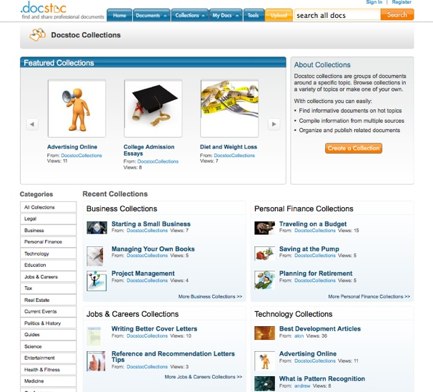 Popular document sharing service DocStoc just launched a collections feature, which lets users package documents around a particular topic. DocStoc has already created close to 50 collections, including “Starting a Small Business,” “Advertising Online,” and “Traveling on a Budget,” and is opening up the platform to users to add to existing collections and create their own. The feature is just another way to organize your documents online and can be a pretty useful tool to manage large amounts of documents that relate to different topics. Competitors Issuu and Scribd both have similar offerings. Scribd’s “Group” feature allows users to organize documents around a theme and tries to connect users to other people who are interested in the same reading and topics. Issuu recently launched a collaborative Groups feature, where people can collect, organize and discuss publications related to any topic. DocStoc’s feature appears to focus more on the organization of documents around a particular theme than connecting users around that theme. DocStoc is steadily growing, with 3 million documents uploaded and 1.6 million unique visitors a month in the U.S., according to comScore. (The company's internal Google Analytics shows 4.8 million unique visitors worldwide). Docstoc recently took off its "beta" label with a homepage redesign, open APIs, and a new revenue-sharing model called DocCash. Crunch Network: CrunchBase the free database of technology companies, people, and investors |
| Another Vote Of Confidence For Post-Print Media: Business Insider Raises New Funding Posted: 21 May 2009 01:56 PM PDT
In a blog post annoucing the news, co-founder Henry Blodget details the new investors in the round, who include Marc Andreessen, Allen & Company LLC, Zelnick Media’s Jim Friedlich, and Matt Luckett of Balestra Capital. Other investors include Kohlberg & Company and the blog’s founders. Blodget also notes that the Business Insider is seeing a healthy 2 million monthly unique visitors. Along with SAI, Business Insider’s other blog verticals include the Wall Street-centric Clusterstock and Green Sheet, which covers green energy and related environmental news. While the network had a false start with media site The Biz, which shut down in the last few days, we can probably expect Business Insider to expand into new verticals as the company continues to grow. Crunch Network: CrunchGear drool over the sexiest new gadgets and hardware. |
| Google Friend Connect Finds A Friend In Netlog Posted: 21 May 2009 01:44 PM PDT
Google Friend Connect is now integrated with one of Europe’s fastest growing social networks, Netlog. Netlog, which has more than 45 million users worldwide, just implemented Google’s alternative to Facebook Connect, which allows users to sign in using any ID supported by Google Friend Connect (including Google, Yahoo, AIM, and OpenID) and share their activities with their existing contacts. Google’s integration with Netlog lets users sign into sites and blogs using Friend Connect with their Netlog ID and password. Users can use their Netlog profiles on the site, invite other Netlog users to join Friend Connect, and also share their Friend Connect activity with friends on Netlog. On the back end, Google uses standards like OpenID, OAuth, and OpenSocial technologies to enable Netlog and other social networks and sites to plug into Friend Connect. Netlog is growing fast, especially in Eastern Europe and the Middle-East, where it serves as the community portal of choice thanks to its viral nature and extensive language translation program. But even though Netlog is becoming increasingly popular in other parts of the world, this isn’t as big of a win for Google as the integration of a popular social network worldwide like Facebook, which officially has 200 million registered users around the globe (250 to 280 million unofficially). And Facebook just hit 307 million unique visitors worldwide in April, with MySpace trailing behind with 127 million unique visitors in April, according to comScore. By comparison, comScore’s worldwide unique visitor estimate for Netlog is 23.8 million. Crunch Network: MobileCrunch Mobile Gadgets and Applications, Delivered Daily. |
| What We Know About The Apple Tablet So Far Posted: 21 May 2009 12:56 PM PDT
More evidence of the Apple Tablet surfaced today. We first wrote about the device at the end of last year when OEMs in China started hearing about the device. Details are still thin, although probably not because of a lack of leaks. Rather, Apple may still be locking down important specs like screen size. We’d heard 7 - 9 inch screen size late last year, but today’s reports range up to 10 inches, which we’ve also heard from our sources as a possible size. We don’t know what the final price point will be, but somewhere between $500 and $1,000 makes sense. We’ve also heard that the launch date was pushed from this Fall to early next year, and we’ve confirmed that significant human assets from the iPod and iPhone team have been dedicated to the project. In other words, the project is very real. The operating system is likely to be based on the iPhone OS, which is a derivative of the standard Mac OS X. Some app developers have seen underlying code that suggests a larger screen device is on the way. That means the App Store is a big part of the Apple Tablet, and the device will be particularly useful for gaming. What we don’t know - the final screen size or the core CPU, although 10 inches is likely as we said, and it wouldn’t be surprising for Apple to launch with the Samsung ARM11 chip in the iPhone or their own proprietary chip from P.A. Semi, a company they acquired in 2008. It’s not inconceivable that Apple would build around an Intel dual core that is common in most laptops, although the power usage of those chips would mean adding so much battery weight that the tradeoff may be unacceptable. But if you look at the Macbook Air, which is a dual core machine that’s just an inch thick, you can imaging a dual core Apple Tablet. The only problem there would be cost - that is a $2,000 machine. Most of the discussion today around CPUs is power usage, not core computing horsepower. ARM and Atom chips compete in low end devices like mobile phones and netbooks. Neither are great for Internet browsing - Flash, particularly video, still doesn’t work properly on ARM. Intel’s Atom isn’t much better because it can’t handle full screen or HD Flash video without skipping. Atom chips are also 2-3x the cost of ARM 11 chips and use significantly more power. Apple actually underclocks their ARM11 chip to get more battery life out of the iPhone, which hurts performance. This Will Be A Huge Hit Our posts about the CrunchPad show how seriously consumers want a device like this. It is the perfect couch computing device and will create a whole new category of computers. Everyone so far has blundered along with tiny screens. Apple is going to get it right. The price point and production capacity in China will be the only limiting factors in the number of units they can sell, in my opinion. Crunch Network: MobileCrunch Mobile Gadgets and Applications, Delivered Daily. |
| Google Revises And Revs Chrome’s JavaScript Engine Posted: 21 May 2009 11:50 AM PDT
JavaScript-heavy webpages (such as Gmail), will now run 30% faster on Chrome, according to Google. Given how fast they were already running, that’s fairly insane. This new version of Chrome also boasts the ability to remove thumbnails from the Tab Page. This is a feature that rival browsers such as Safari 4, already offer and is useful if, as Google notes in the video below, “you have a site in there that you’d rather not admit to visiting quite as often as your actually do.” Other new features include full-screen browsing mode and form auto-fill. Again, many of its rivals also already offer these. Google says its fixed over 300 bugs that have caused crashes since it first launched. That’s nice, but the speed is the real story here. At least until the damn Mac version launches. Crunch Network: CrunchBase the free database of technology companies, people, and investors |
| What’s In The Gmail Magic Inbox? Posted: 21 May 2009 11:14 AM PDT
Specifically, Google Operating System, which did the digging, believes that the feature likely is a way to sort your Gmail inbox by your social graph. The two references to “friends” in the code, seems to lend some credence to this. Presumably, this would allow you to better filter your inbox based on if you have specified the emailer as a contact. As someone who gets bombarded by email everyday, most of which is not from people I actually know, I would weep with joy if such a feature were implemented. And so would my mom, as she may actually get emails back from me were that the case. Of course, others have been working on this same idea as well. Yahoo has been saying for a while that it wants to use your inbox as a part of your social graph. Microsoft’s Hotmail has been working on things in the area as well, as has Xobni. But given all the work Google has been doing recently to tighten up its social graph across its huge network of services, a social filter in Gmail could be very, very useful.
This proved to be an awful idea as people you email aren’t necessarily your friends. Google eventually rolled out several updates to this feature to allow users to better tailor their relationships. And that would obviously be a key part of a Gmail social filter as well. You need to be able to separate out your actual friends from those who you simply have contacted in the past, or maybe even correspond with a lot. While Google hasn’t exactly nailed the social features, it’s pretty clear that the company is thinking about them — a lot. And that your Google Contacts, which started as a part of Gmail, but have since been spun out, are a key part of it. Google I/O, its large developer conference is taking place next week. Google is likely to use the event to unveil some key new things it has been working on. Could that be a “magic inbox,” which is also called “icebox inbox” in the code? We’ll be there to find out. Maybe Gmail will even leave beta — but probably not. Crunch Network: CrunchBoard because it’s time for you to find a new Job2.0 |
| OpenTable Has A Healthy IPO. Shares Shoot Up 40 59 Percent, Market Cap Passes $600 Million. Posted: 21 May 2009 10:27 AM PDT
Is the IPO drought over? Not quite. But OpenTable’s successful IPO today will give tech startups and VCs a sign of hope that you can still go public eventually if you have a real business. On a day when the Nasdaq is down 2 percent, OpenTable is up This is an extremely healthy IPO. Opentable is not a blowout Internet company. But it is a solid Internet company that matters. It pulled in $55.8 million in revenues last year and a net loss of $1 million (largely due to expansion-related costs). In the first quarter of 2009, it managed to turn a net profit of $366,000 on revenues of $16 million. (For a deeper financial analysis, see this earlier post). OpenTable delivers reservation management software to restaurants through a Web browser and collects monthly subscription revenues. In that sense it is in the same class of software companies as Salesforce—selling software as a service over the Web to business customers. But it also has a friendly (free) consumer-facing side. It is yet another example of enterprise and consumer apps merging in the cloud. So what does it take for a tech company to IPO these days? If OpenTable is the new measuring stick, a company needs at least $50 million in revenues, have at least one quarter of profits, customers with proven loyalty, and solid growth potential. In other words, it needs to be a real business. Crunch Network: CrunchBase the free database of technology companies, people, and investors |
| Areps.at: This Week’s Facebook Phishing Scam Posted: 21 May 2009 08:37 AM PDT
Looks like Facebook has another phishing scam to deal with. Today’s is a message that appears to be appearing in users’ inboxes with the prompt to “Check areps.at.” Similar to last week’s 151.im phishing scheme the domain is not automatically hyperlinked in Facebook, but email clients, like Gmail or Yahoo, will auto-link it. Don't click on that link and don't copy and paste it into your browser. Apparently the link will lead you to a Facebook log-in page. If you login to the site, the site will steal your email and password and will send all of your friends the same message. Twitter reveals that the same has been taking place all morning but I just received a Facebook message from a friend who was sucked into the scam a half hour ago. Crunch Network: CrunchBase the free database of technology companies, people, and investors |
| You are subscribed to email updates from TechCrunch To stop receiving these emails, you may unsubscribe now. | Email delivery powered by Google |
| Inbox too full? | |
| If you prefer to unsubscribe via postal mail, write to: TechCrunch, c/o Google, 20 W Kinzie, Chicago IL USA 60610 | |
 Mike Massimino, an astronaut on space shuttle Atlantis, is going to have to do some explaining to the
Mike Massimino, an astronaut on space shuttle Atlantis, is going to have to do some explaining to the  While OpenTable had a
While OpenTable had a  The U.K. High Court today ruled in favor of
The U.K. High Court today ruled in favor of 
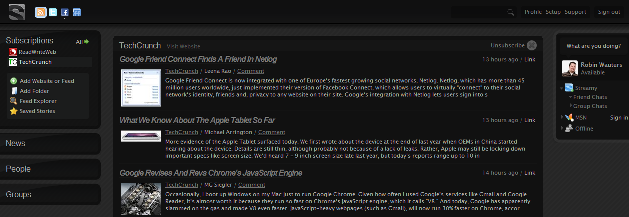

 I am currently in Sapporo/Japan, attending the
I am currently in Sapporo/Japan, attending the  Best of show went to Sony-backed
Best of show went to Sony-backed 

 I sincerely hope that a part of Apple’s WWDC
I sincerely hope that a part of Apple’s WWDC  At one point in the entire long back and forth with the developer, Apple suggests resubmitting the app once the parental controls are in place with the iPhone 3.0 software. Well that’s great. Why not make all developers who have been working their asses off to contribute to the huge success of the App Store wait a few months (likely until July) to be able to profit from their work? That makes a lot more sense than just fixing the
At one point in the entire long back and forth with the developer, Apple suggests resubmitting the app once the parental controls are in place with the iPhone 3.0 software. Well that’s great. Why not make all developers who have been working their asses off to contribute to the huge success of the App Store wait a few months (likely until July) to be able to profit from their work? That makes a lot more sense than just fixing the  Perhaps the biggest barrier to entry to using a feed reader for most people is building up a collection of good feeds. Sure, you can import someone else’s OPML file, but most people have no idea what that means, let alone how to do it. The “Browse for stuff” area of Google Reader is a better solution, as it offers a front-end way to subscribe to some suggested feed. But up until now those have been suggested by Google. Starting today, you and your friends on Google Reader can
Perhaps the biggest barrier to entry to using a feed reader for most people is building up a collection of good feeds. Sure, you can import someone else’s OPML file, but most people have no idea what that means, let alone how to do it. The “Browse for stuff” area of Google Reader is a better solution, as it offers a front-end way to subscribe to some suggested feed. But up until now those have been suggested by Google. Starting today, you and your friends on Google Reader can 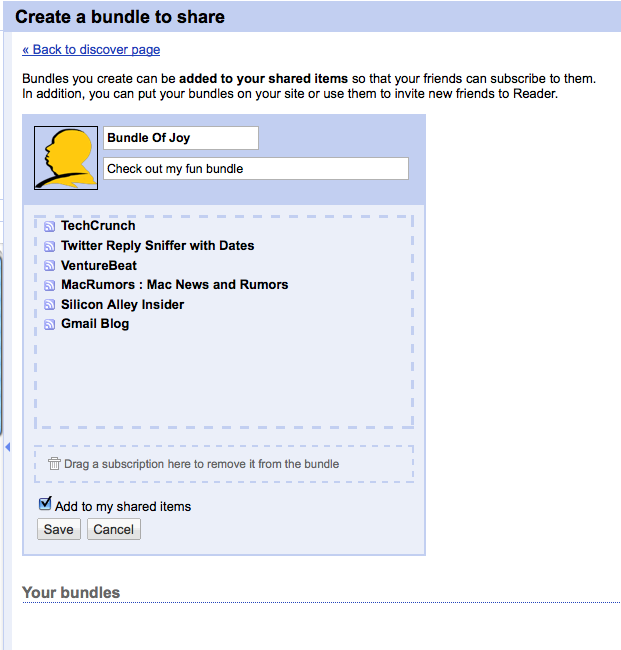

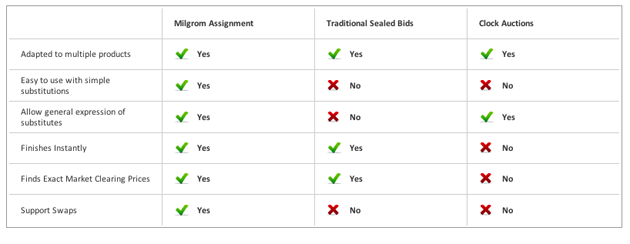
 Gmail has always offered an odd mixture of lightning fast AJAX navigation and frustratingly slow load times, depending on what you’re doing. The worst offender, by far, is the initial load when you first open the page - sometimes the loading bar flashes by in a second, others it chooses to sluggishly crawl without any apparent intention of ever finishing. If you find yourself seeing the latter all too often, then you’re going to be quite pleased with a new Gmail Labs feature that just
Gmail has always offered an odd mixture of lightning fast AJAX navigation and frustratingly slow load times, depending on what you’re doing. The worst offender, by far, is the initial load when you first open the page - sometimes the loading bar flashes by in a second, others it chooses to sluggishly crawl without any apparent intention of ever finishing. If you find yourself seeing the latter all too often, then you’re going to be quite pleased with a new Gmail Labs feature that just 

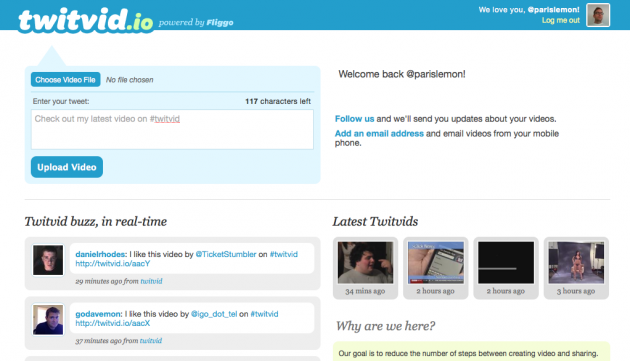
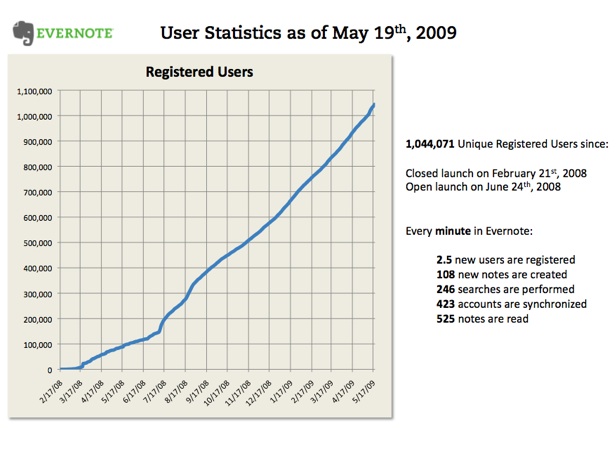
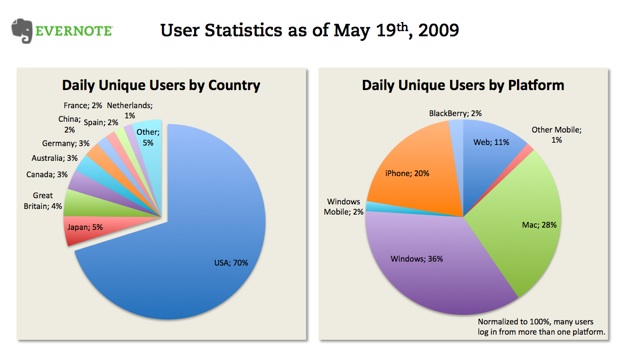
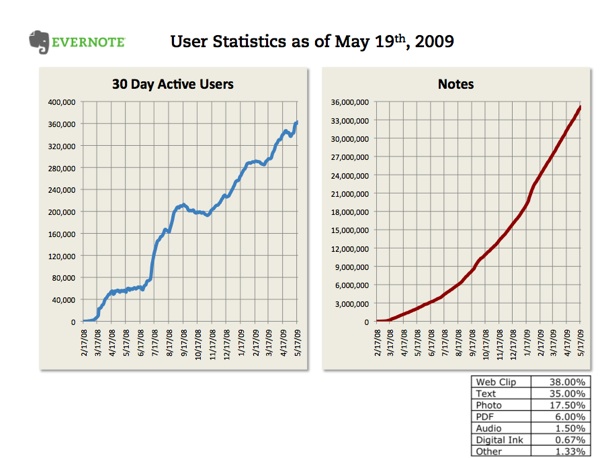
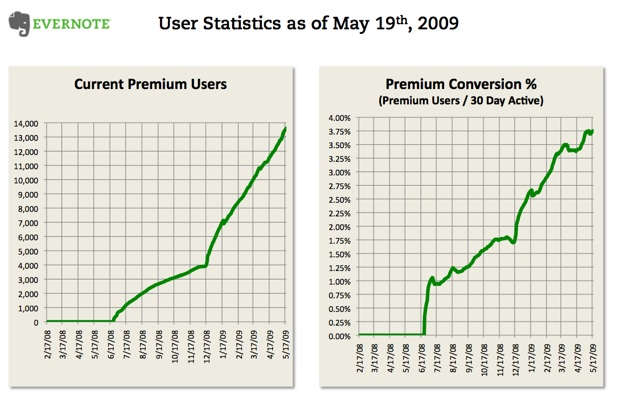

 The iPhone is still hands-down one of the best 5 tech purchases I’ve made over the past decade — actually, it’s probably the best. I use it every day to do a variety of things that I still find incredible that I’m able to do in something so portable. That said, over the past few months, I’ve been getting frustrated at the speed of the device. Some of the applications built for it, notably the games, are simply resource hogs. And that’s made applications like
The iPhone is still hands-down one of the best 5 tech purchases I’ve made over the past decade — actually, it’s probably the best. I use it every day to do a variety of things that I still find incredible that I’m able to do in something so portable. That said, over the past few months, I’ve been getting frustrated at the speed of the device. Some of the applications built for it, notably the games, are simply resource hogs. And that’s made applications like  It always seemed a little lame to me that the iPhone 3G featured the same 400 MHz processor that the original iPhone did. In fact, the second generation iPod touch actually
It always seemed a little lame to me that the iPhone 3G featured the same 400 MHz processor that the original iPhone did. In fact, the second generation iPod touch actually  The last
The last 


 Occasionally, I boot up Windows on my Mac just to run Google Chrome. Given how often I used Google’s services like Gmail and Google Reader, it’s almost worth it because they run so fast on Chrome’s JavaScript engine, which it calls “V8.” And today, Google has apparently slammed on the gas and made V8 even faster.
Occasionally, I boot up Windows on my Mac just to run Google Chrome. Given how often I used Google’s services like Gmail and Google Reader, it’s almost worth it because they run so fast on Chrome’s JavaScript engine, which it calls “V8.” And today, Google has apparently slammed on the gas and made V8 even faster. One almost surefire way to find if a new feature is on the verge of launching is to dig through code. That’s exactly what led to finding a reference to something called “Magic Inbox,” in Gmail. But what is it? Well, it could just be another one of those nifty, but small new features that Google
One almost surefire way to find if a new feature is on the verge of launching is to dig through code. That’s exactly what led to finding a reference to something called “Magic Inbox,” in Gmail. But what is it? Well, it could just be another one of those nifty, but small new features that Google 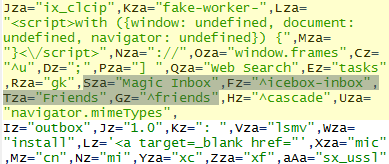 Users are likely to have security concerns about this as well. Some people want their email client to be completely private and not a part of the social graph. Of course, Google has already been using Gmail as a key starting point for your social graph for a while now, even if you didn’t realize it. Well over a year ago, Google it rolled out its social features to Google Reader, pulling in who it thought your friends were based on who you emailed in Gmail.
Users are likely to have security concerns about this as well. Some people want their email client to be completely private and not a part of the social graph. Of course, Google has already been using Gmail as a key starting point for your social graph for a while now, even if you didn’t realize it. Well over a year ago, Google it rolled out its social features to Google Reader, pulling in who it thought your friends were based on who you emailed in Gmail.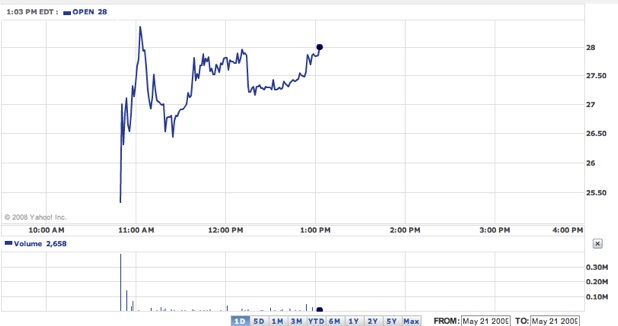

No comments:
Post a Comment